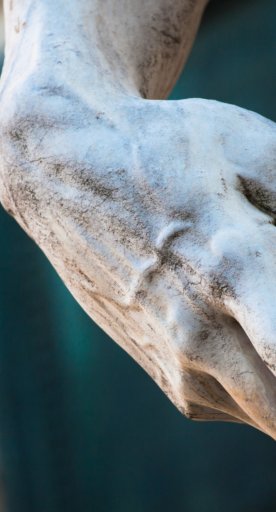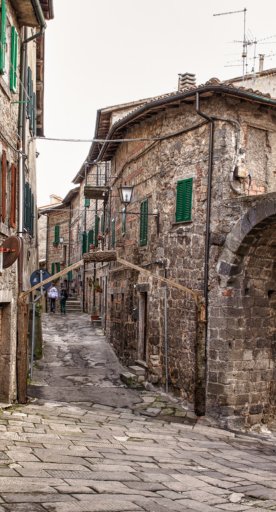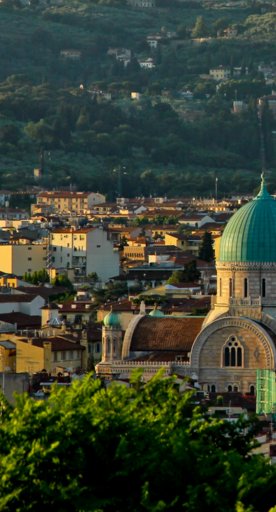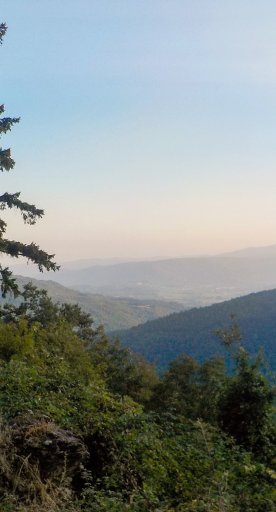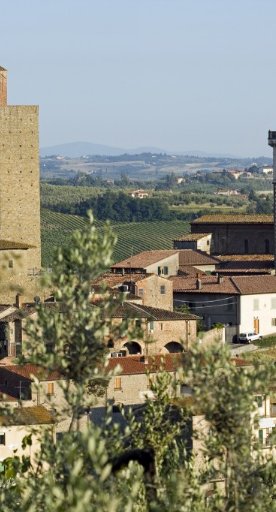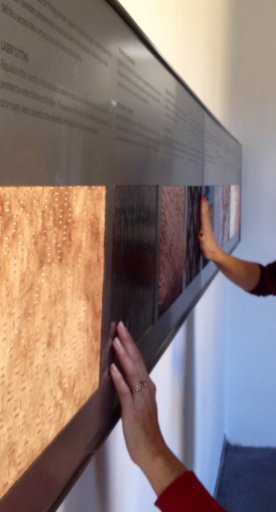

9 towns near Arezzo
From Cortona to Capolona, immerse yourself in stunning natural and artistic heritage
The Arezzo Area is rich in magnificent landscapes and cultural treasures. Not only is it home to the fascinating town of Arezzo itself, full of frescoes by Piero della Francesca and historic traces of Etruscan civilization, but the entire area is dotted with captivating towns, truly beautiful art, history, traditions and breathtaking nature, nestled among the varied terrain. The agricultural heart of Tuscany is found in Valdichiana Aretina, a valley of alluvial with incredible food to enjoy. Here are nine towns that allow you to explore this small yet fascinating area.
-
1.Cortona
-
2.Castiglion Fibocchi
-
3.Foiano della Chiana
-
4.Lucignano
-
5.Castiglion Fiorentino
-
6.Civitella in Val di Chiana
-
7.Monte San Savino
-
8.Marciano della Chiana
-
9.Capolona
Cortona

First up is the hilltop town of Cortona, about 30 kilometres from Arezzo. You might recognize it from the bestselling book Under the Tuscan Sun by Frances Mayes, which uses the town as its main setting. Start your visit in either the piazza della Repubblica or piazza Signorelli, once an ancient Etruscan-Roman forum. In every direction you look there are medieval buildings such as the Palazzo Comunale (Town Hall), dating back to 1236, the 14th century Palazzo del Capitano del Popolo, Palazzo Pretorio and Palazzo Casali. The Cathedral of Santa Maria Assunta is another must-see, as is the Diocesan Museum with The Annunciation by Beato Angelico and The Deposition by Luca Signorelli on display. Heading higher up into the town, you can wander through the wonderfully atmospheric narrow streets.
Castiglion Fibocchi

This small village, only minutes away from Arezzo, is enveloped in its deep history dating back to the Roman empire and situated overlooking the magnificent Tuscan countryside. The town unfolds along its beautiful alleyways lined with typical stone buildings and tranquil piazzas. Worth visiting are the Municipal Palace, the Church of Santi Pietro and Ilario and the 12th century gateway of Porta Fredda. You can also wander along the stone defensive walls, taking in the atmosphere. The best time to visit Castiglion Fibocchi is in February, when it holds its lively and historic carnival.
Foiano della Chiana

Foiano della Chiana is surrounded by city walls. Upon entering the village, a road leads to piazza Cavour where the town hall faces Palazzo Monte Pio. Admire the notable works by Andrea della Robbia as well as other artists of the Renaissance. Walk along the Corso Vittorio Emanuele and gaze in awe at the 18th-century loggia and piazza della Collegiata, San Michele Arcangelo Church, the church of Santa Maria della Fraternità, the 14th-century Palazzo Pretorio, and much more. The town is also known for its Carnival – the oldest in Italy - which takes place every February.
Lucignano

Lucignano is a walled medieval hilltop town overlooking the Valdichiana and located about 25 kilometres southwest of Arezzo. Here you can visit the fortress, the sanctuary of the Madonna della Querce, the convent of the Cappuccini and the churches of Misericordia and della Collegiata. But above all, Lucignano is known for being home to the “Tree of Love” or “Tree of Life,” a 2,60 meter-tall Gothic masterpiece decorated with coral, enamel and rock crystal in the Town Museum. People believed that the tree had a magical ability to make love last, so lovers would go there to make their vows of fidelity.
Castiglion Fiorentino

Just 18km from Arezzo is Castiglion Fiorentino, another walled town hiding incredible history inside. An Etruscan wall was found underneath the current Piazzale del Cassero as well as the remains of an Etruscan temple under Sant’Angelo, one of the town’s churches. Inside the church is the Pinacoteca Comunale with paintings by Margarito, Taddeo Gaddi, Bartolomeo della Gatta and Giorgio Vasari. The 9-arch loggia, Civic Archaeological and Underground Archaeological Excavation Museum inside Palazzo Pretorio and the Municipal Theatre are also worth your time. Visit in spring to catch the popular Maggio Castiglionese, a month full of events.
Civitella in Val di Chiana

Once an Etruscan settlement, Civitella grew enormously in the 9th-10th centuries. The village is enclosed within city walls, interspersed with square towers and a gate called Porta Aretina. The historic centre is home to one of the best-preserved Lombard forts, a Fortress, the 14th-century Palazzo Pretorio, the Church of Santa Maria and a medieval cistern in Piazza Lazzeri. It’s also worth having a look at the 16th century tabernacle with a polychrome majolica by the Robbiana workshop depicting the Madonna and Child. Civitella was also victim to the massacres of the Second World War, and the death of its citizens and destruction of its fortress is remembered with a plaque, a monument and a Hall of Memory. Located along the Arezzo Wine Trail, Civitella also has plenty of food and wine delicacies to try!
Monte San Savino

Monte San Savino is a little medieval town 25km from Arezzo, brimming with Renaissance charm. Various traces of Etruscan and Roman civilization have been found here, such as the Porta Fiorentina in the Cassero, whose museum is dedicated to the town’s centuries-old ceramic tradition. Also worth seeing are the picturesque churches of Santa Chiara, Sant’Agostino and San Giovanni and the historic Ghetto with its striking Synagogue. If you come in September, you might be lucky enough to enjoy the Pork Festival; the town actually holds the record for the longest pork in the world.
Marciano della Chiana

Marciano della Chiana is about 20 km from Arezzo, surrounded by rolling green hills and with wonderfully preserved medieval walls. Its medieval history takes you back to the Lombard domination over Tuscany, and was the seat of the Battle of Marciano in 1554. Take a look around the stunning fortress – one of the most beautiful in the area – and the stately tower, both rising on the east side. Other intriguing sites to visit include the Palazzo dei Priori, the castle with a multifunctional cultural centre inside, and the 14th century church of Santi Stefano and Andrea with the Madonna with child and saints by Bartolomeo della Gatta. Take a wander through its enchanting streets, passing under its clock tower.
Capolona

Located where, according to Dante, “the Arno screws up its nose towards the Aretini,” the popular territory of Capolona is made up of a dense series of hills that form the southern border of the Pratomagno. Dotted with small villages and towns such as Lorenzano, Caliano, Vado and Castelluccio, make sure to visit Santa Margherita, with its perfectly preserved medieval buildings. The 11th century Parish Church of Santa Maria Maddalena in Sietina is particularly interesting, built along an ancient Roman road. Equally, don’t miss Bibbiano with its medieval defensive wall and Cenina’s church dedicated to Saint Lucy. A great time to visit is March, when gourmet lovers can experience the Mostra Filiera del Tartufo Marzuolo, the annual truffle festival.











